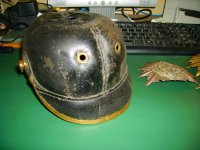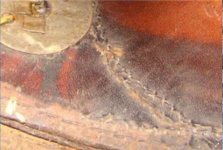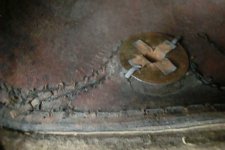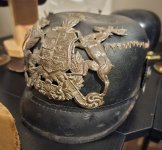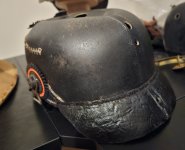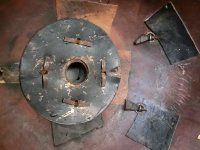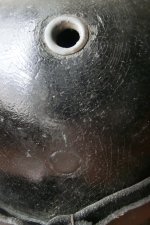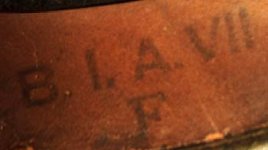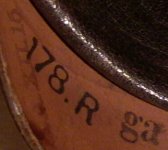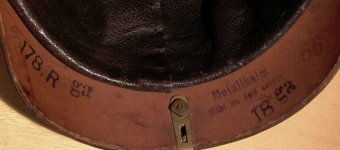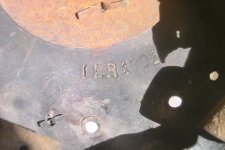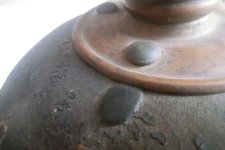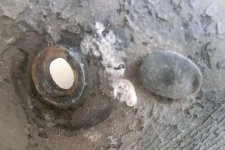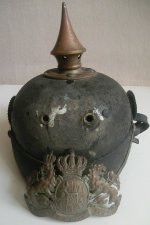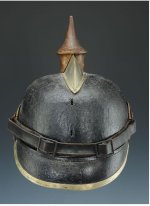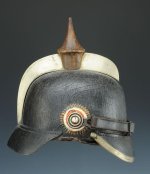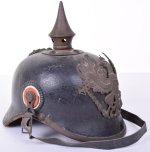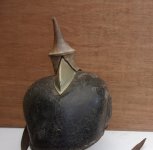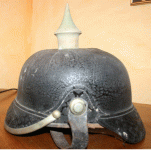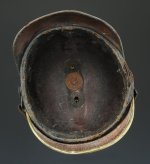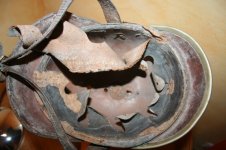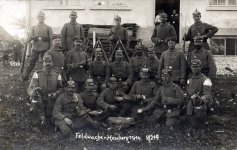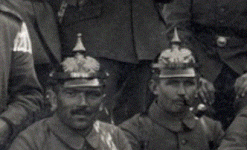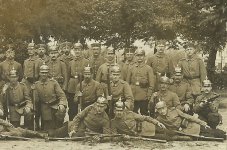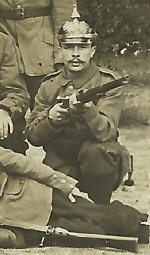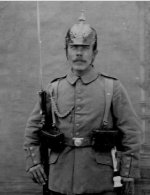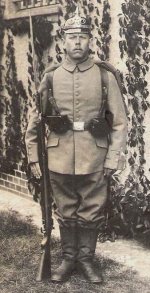If you collect long enough, you are bound to see helmets which have been "Reworked/Repaired" and reissued. The Prussians were famous for this. Anything that could be repaired was fixed. So here, I am posting a couple of photos showing how pre war visors were stitched back on to other helmets. The visor in question is stamped to JR 14, 1913, IIIB. We most often see these "restitched visors" on pre war helmets which were converted to M15 fittings. In this type of helmet, you will often see enlarged wappen holes where the old brass grommets have been taken out, and double visor stitch lines, one showing the original stitching and another where a second visor was put on. You may also see M15 steel grommets in enlarged holes where they did try and replace these, as per regulation. In this example we see a typical restitch where coarser thread is used and we have larger stitches because they are stitching through every other hole. The photos:
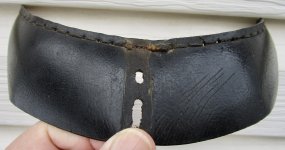
Coarse thread and large stitches are a dead giveaway to a restitch.
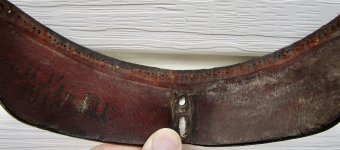
The reverse side also tells the story. The fine original stitch holes are obvious. In summary, all pickelhaube collectors should expect to find these expediency measures where damaged helmets were fixed, brass fitting helmets were converted to M15 and older pre war helmets were revamped and upgraded. Once the Schlieffen plan had failed and Paris not captured, the Germans like the Allies had to scramble to expand their Army and equip hundreds of new formations.

Coarse thread and large stitches are a dead giveaway to a restitch.

The reverse side also tells the story. The fine original stitch holes are obvious. In summary, all pickelhaube collectors should expect to find these expediency measures where damaged helmets were fixed, brass fitting helmets were converted to M15 and older pre war helmets were revamped and upgraded. Once the Schlieffen plan had failed and Paris not captured, the Germans like the Allies had to scramble to expand their Army and equip hundreds of new formations.
Last edited:

